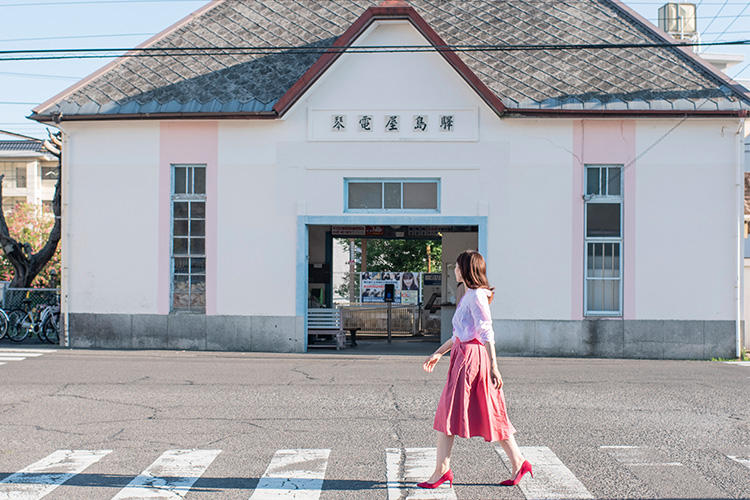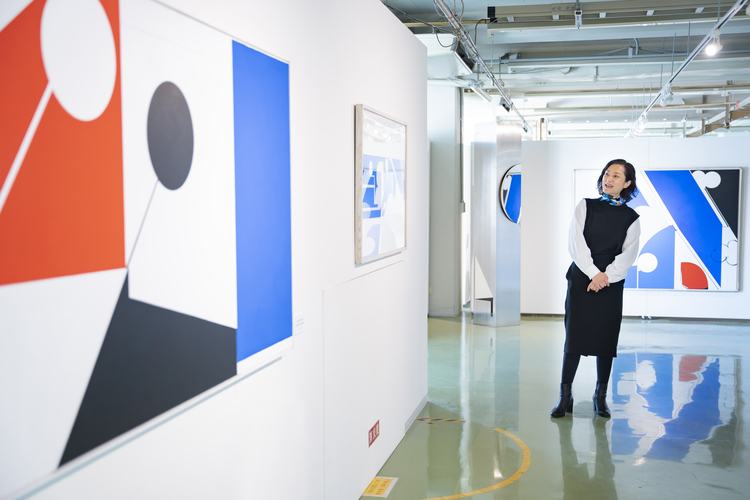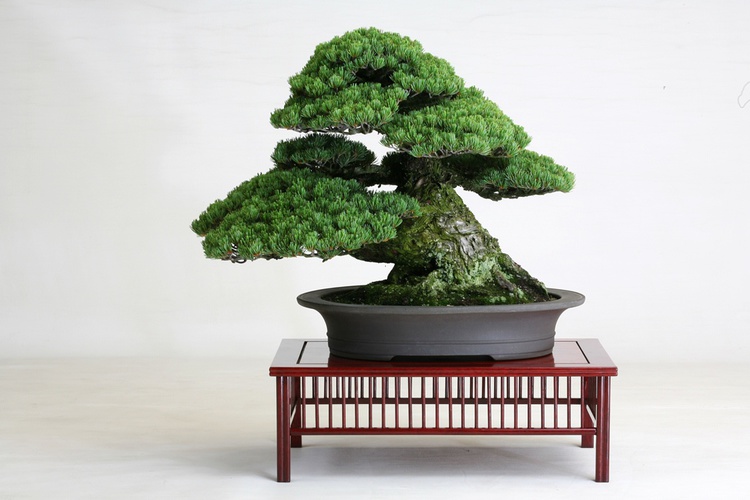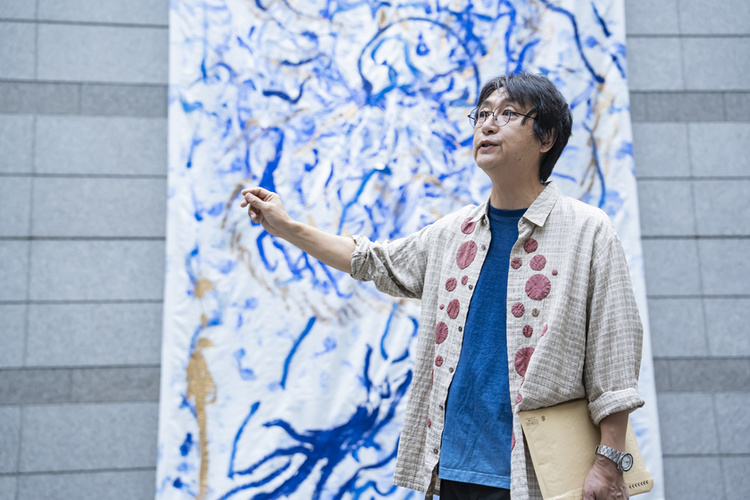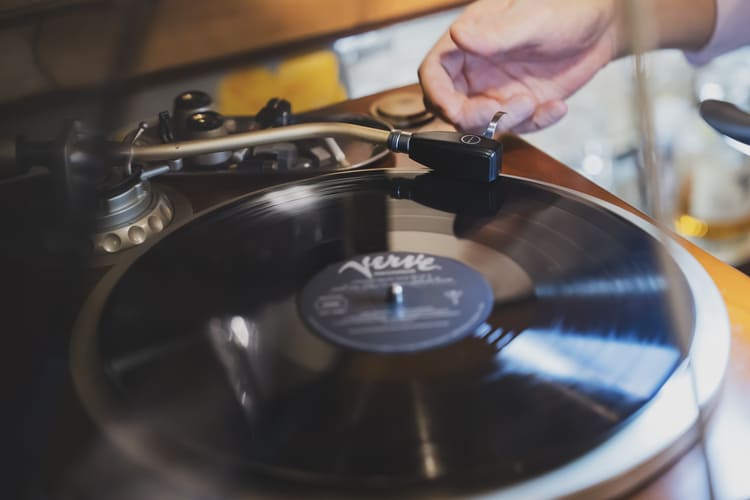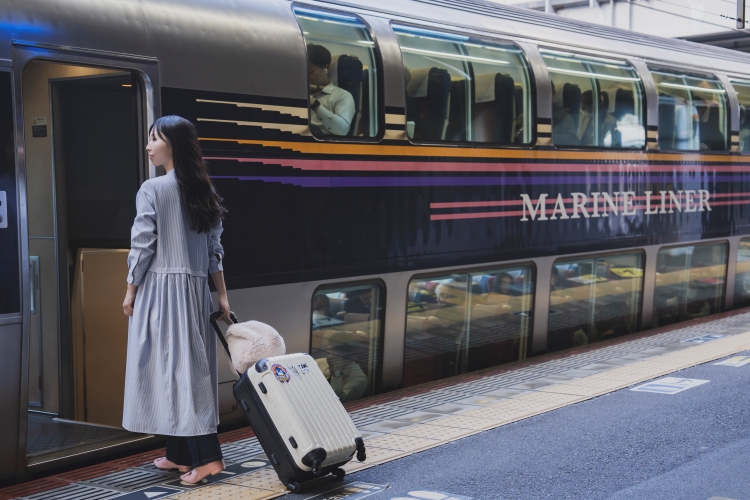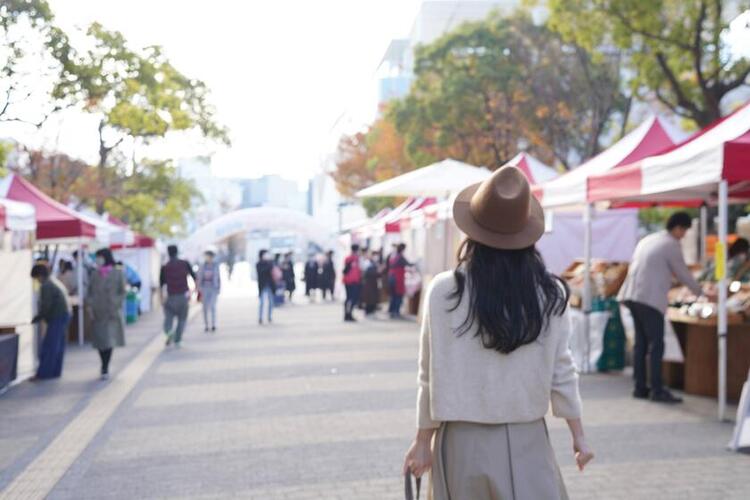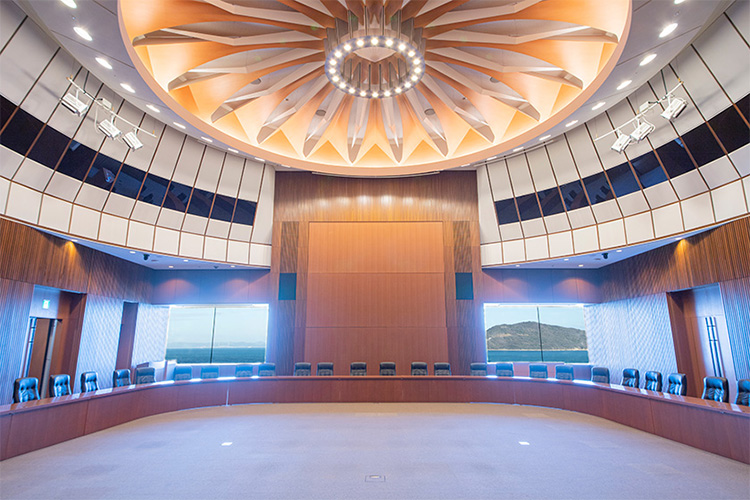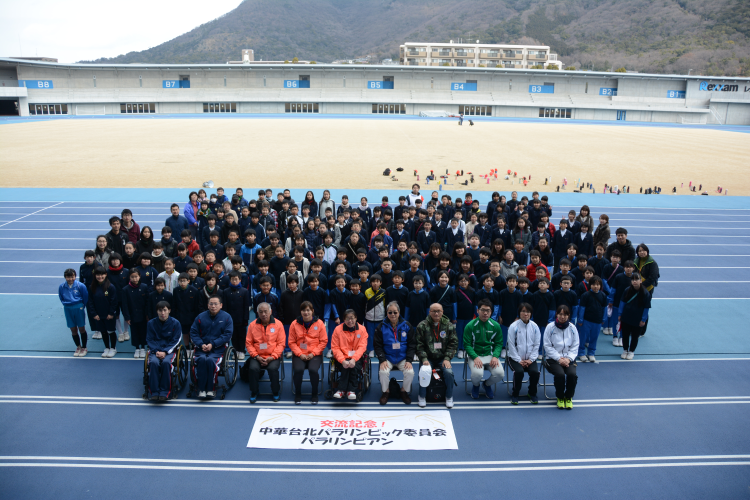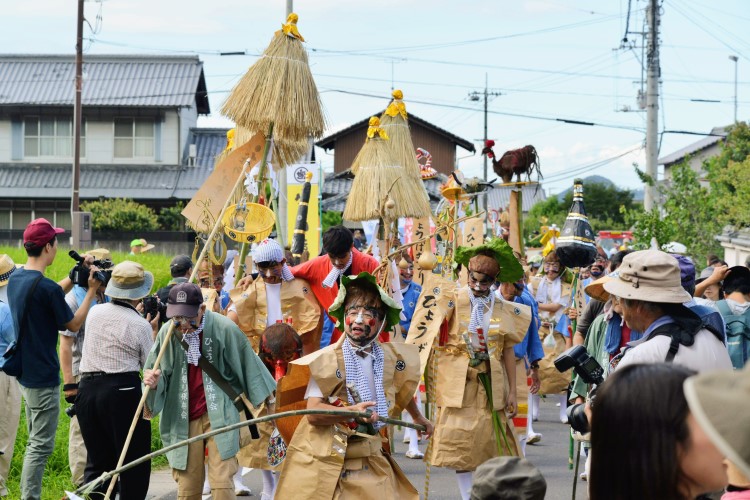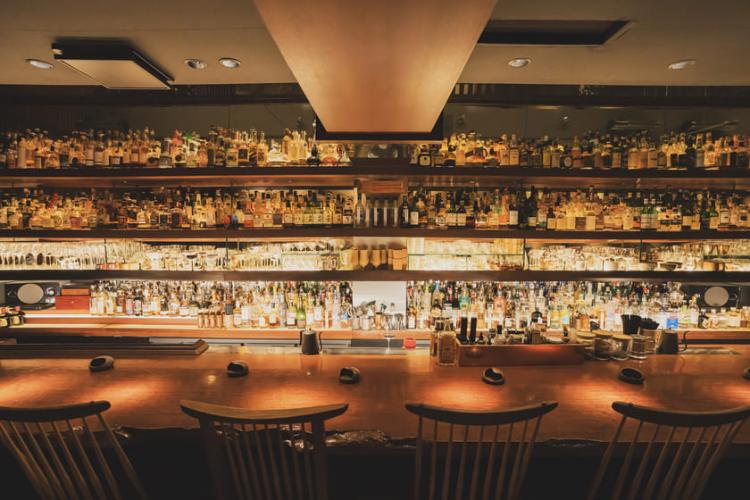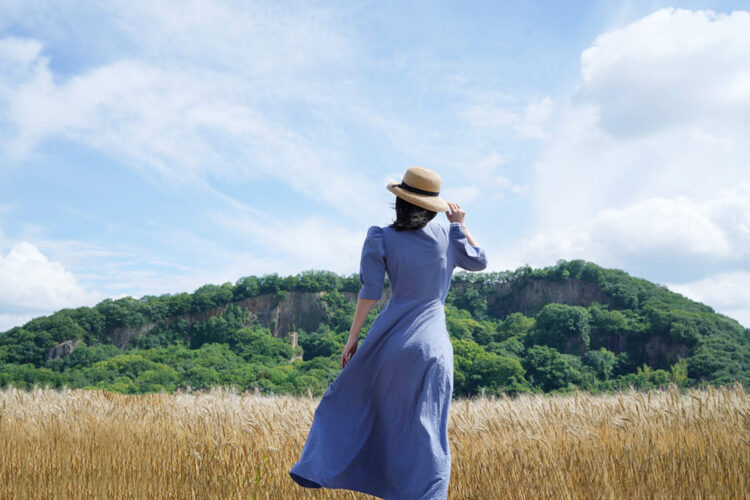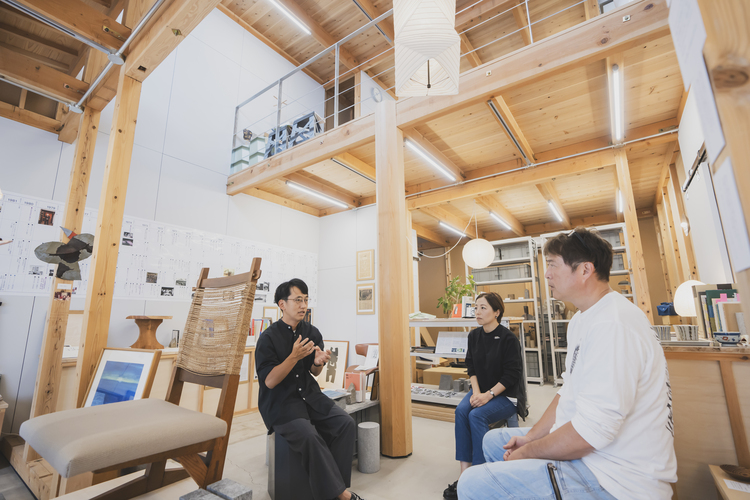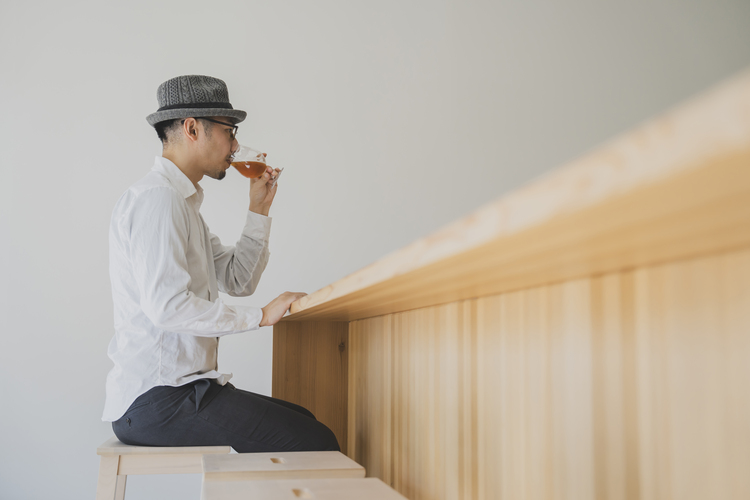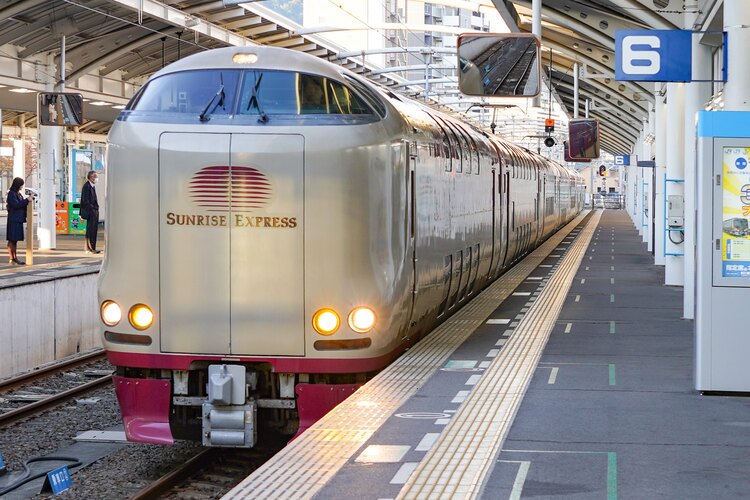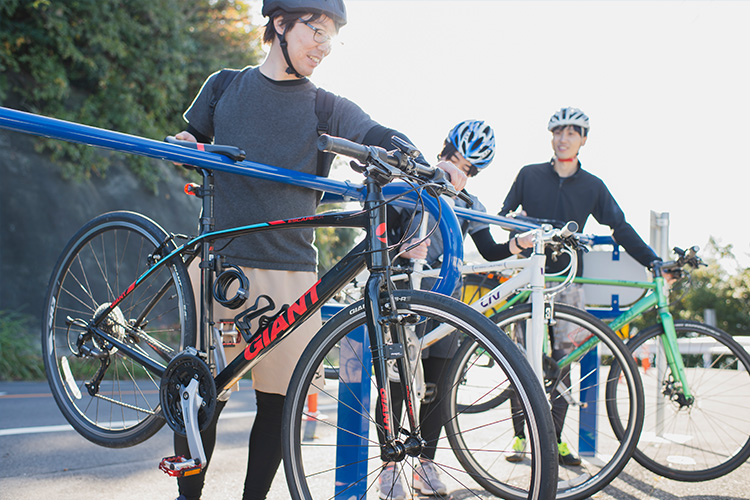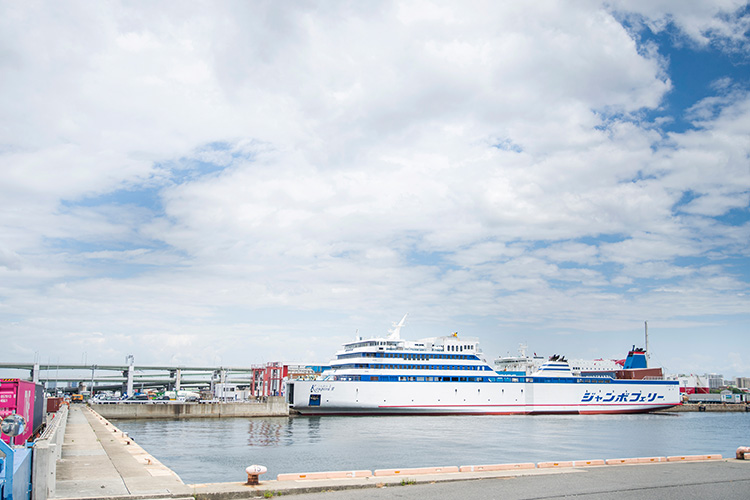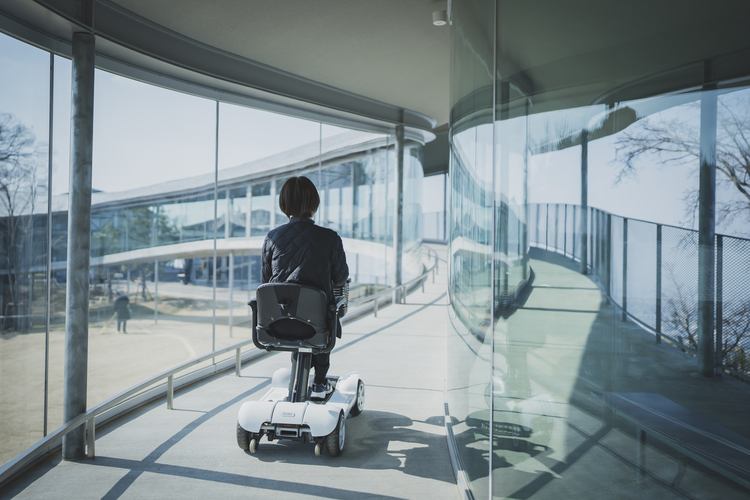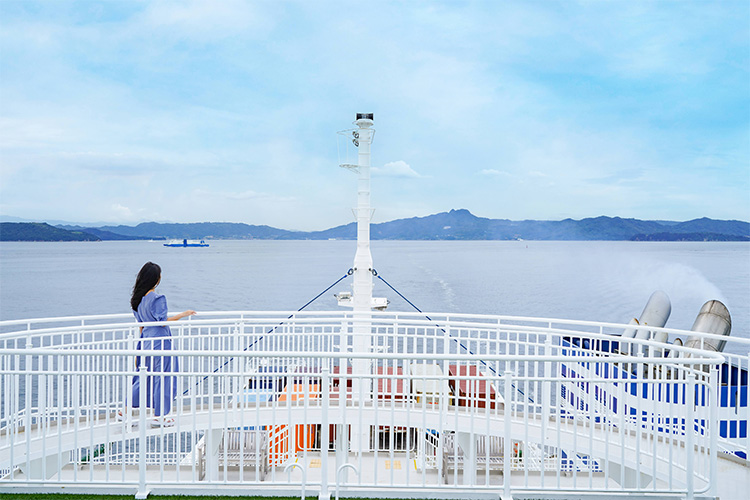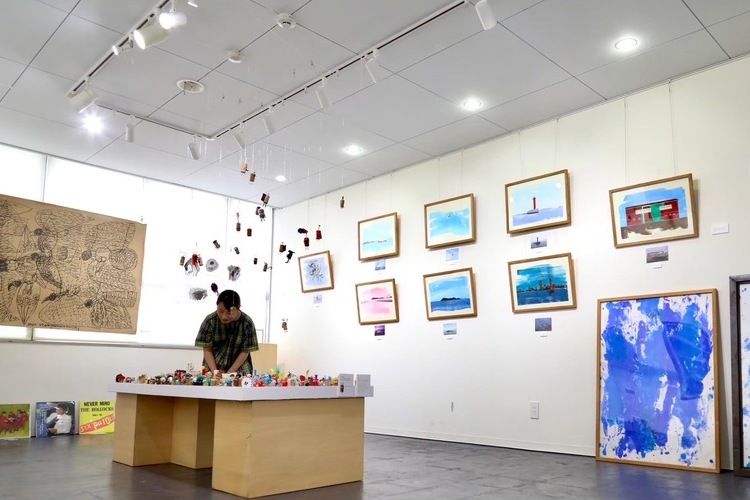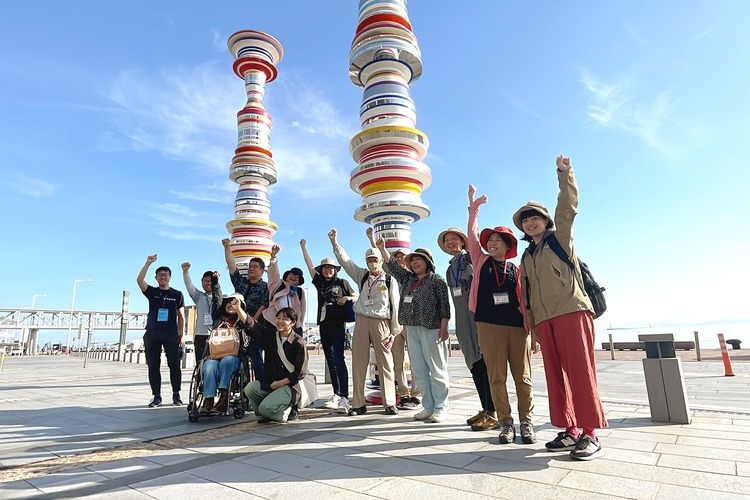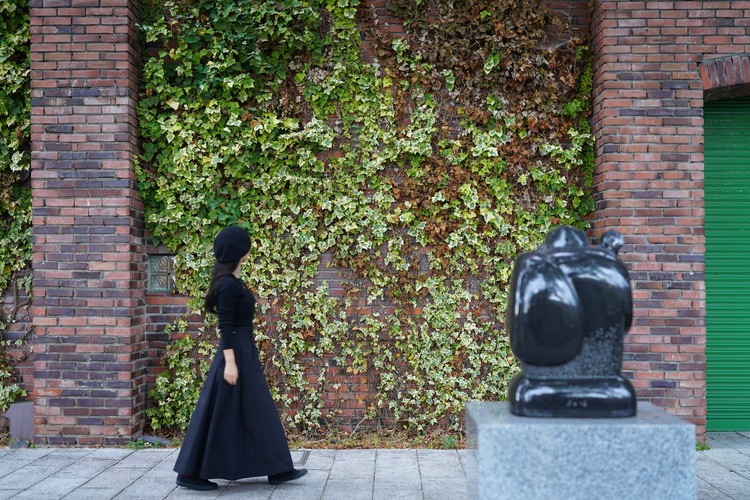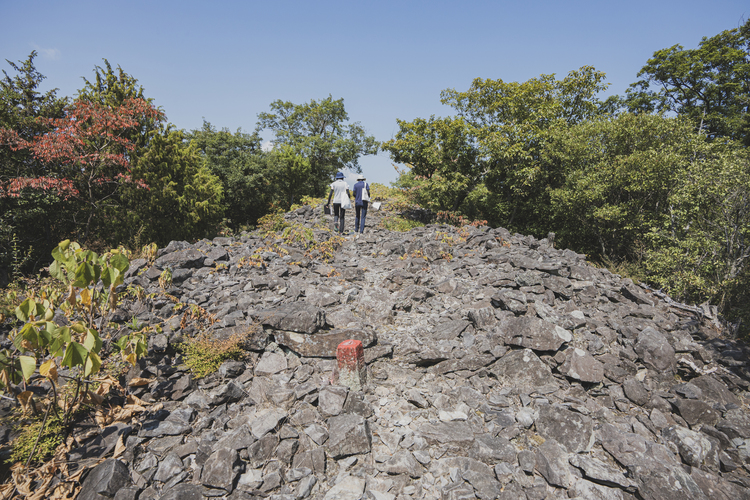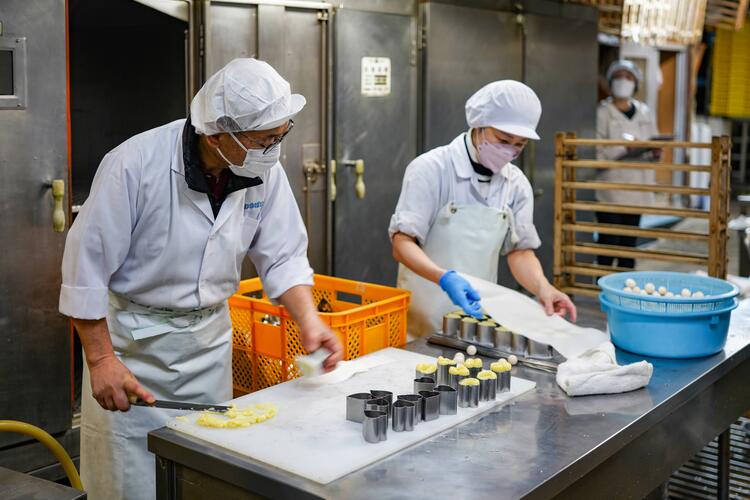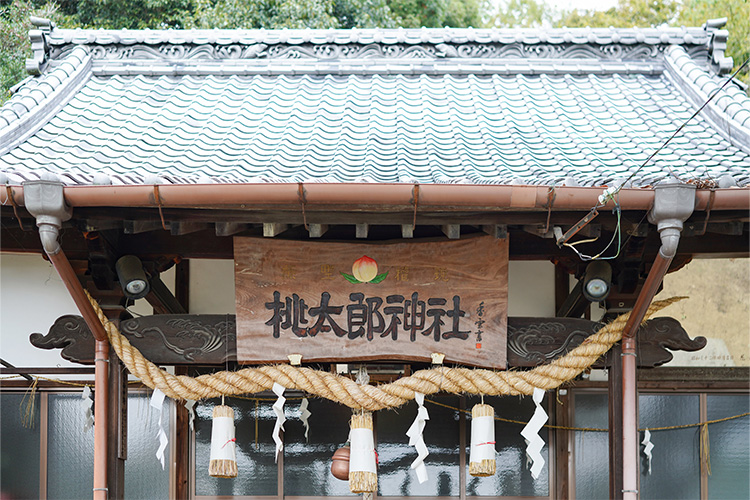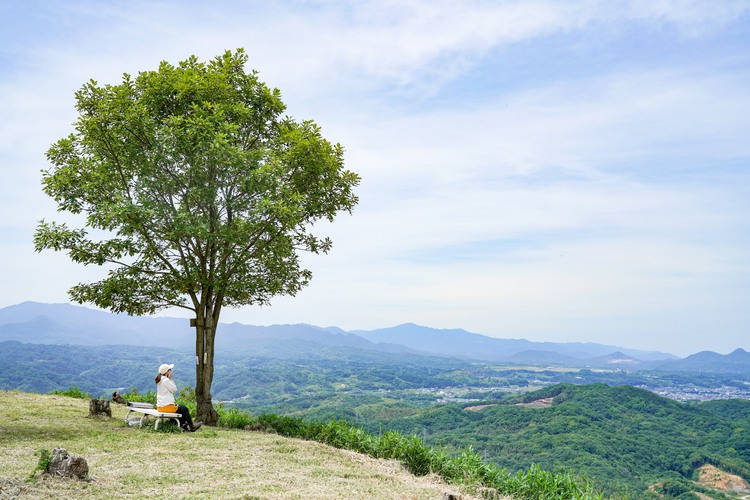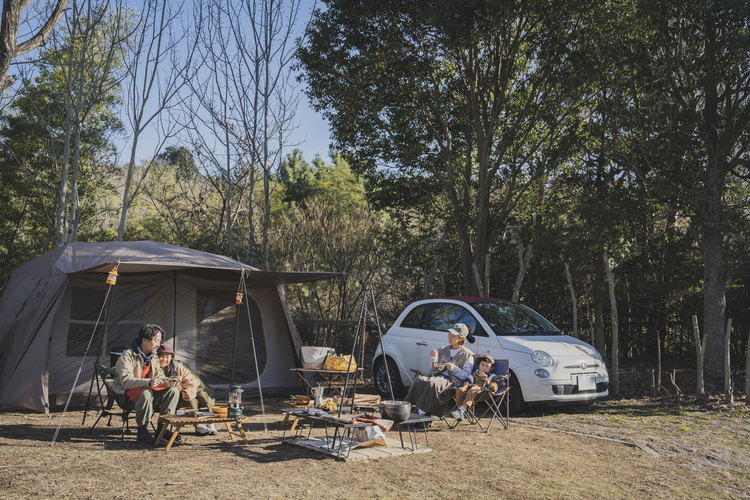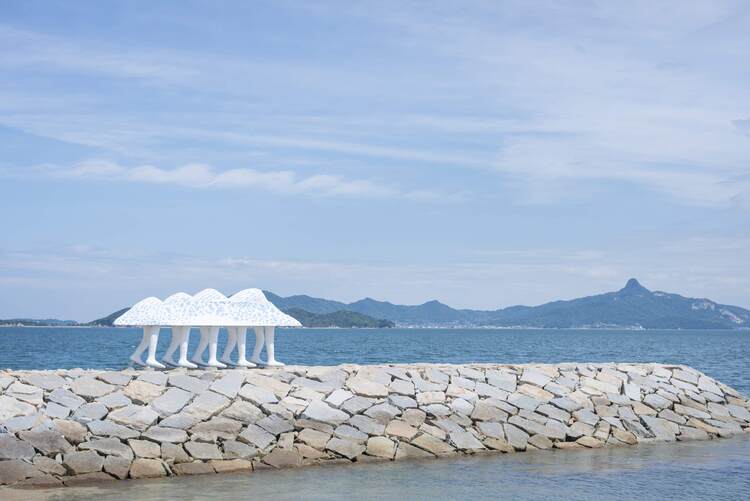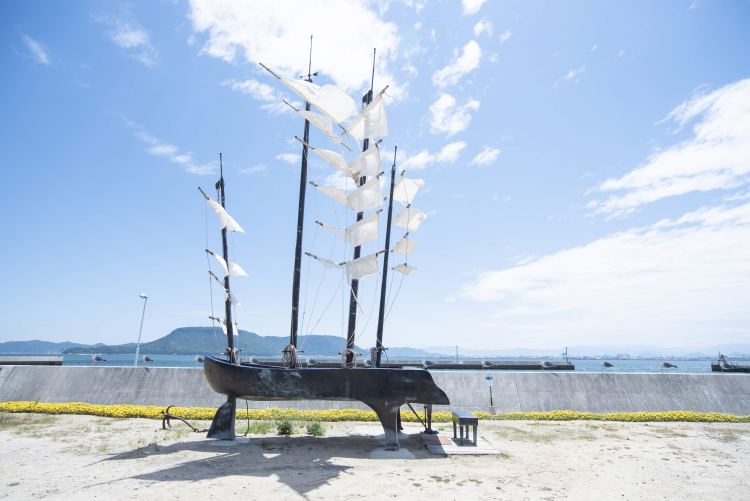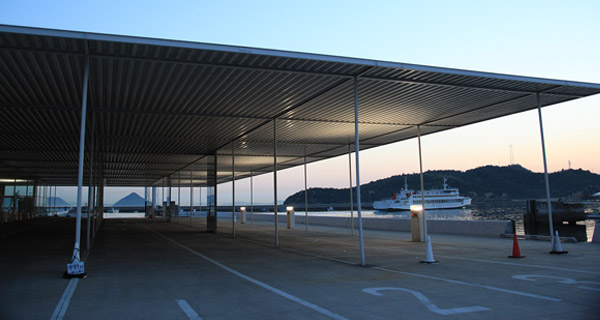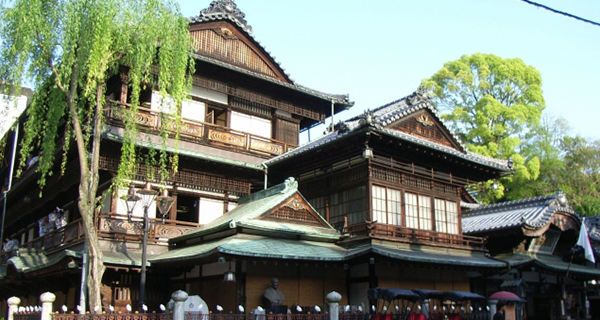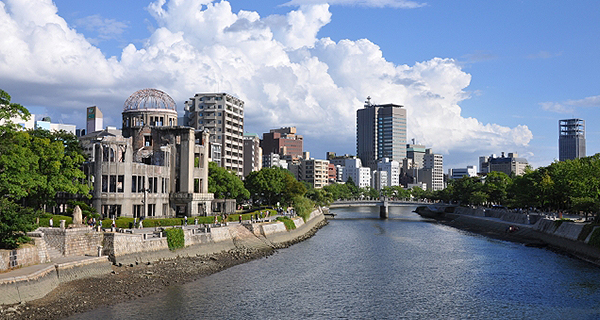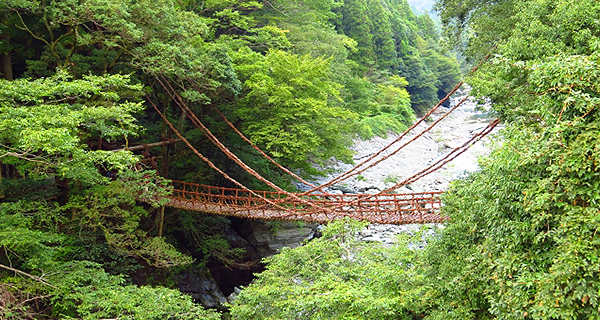Did you know about this distinctive building?
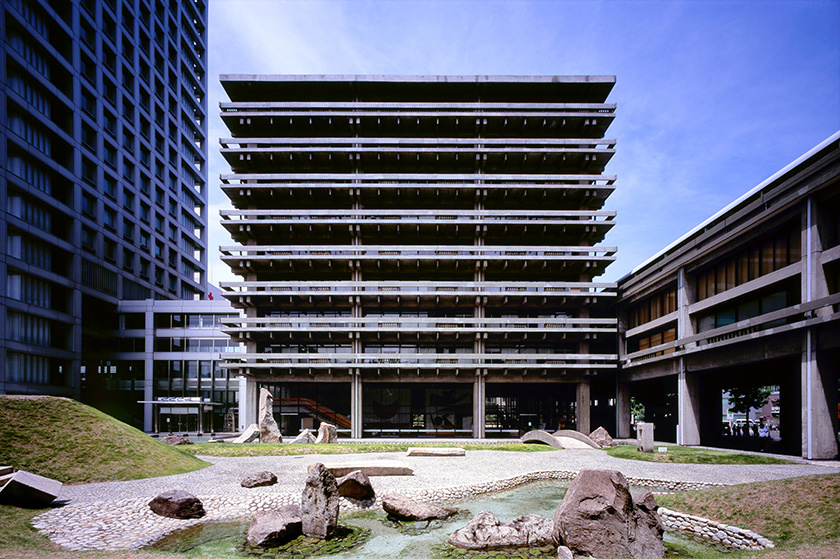
The Kagawa Prefectural Government Office East Building, photographed by Toshihiro Misaki
This is the Kagawa Prefectural Government Office East Building, one of the architectural works of Kenzo Tange.
It was built in 1958 and is an architectural masterpiece typical of major modernism architecture.
* It is closed because seismic strengthening work is in progress as of February 2019. The work is scheduled to be completed in December 2019. Please visit then.
In Takamatsu from the 1950s to 1960s, many architects and artists were active with the support of Masanori Kaneko, who is known as the design governor.
Artists Closely Connected with Takamatsu
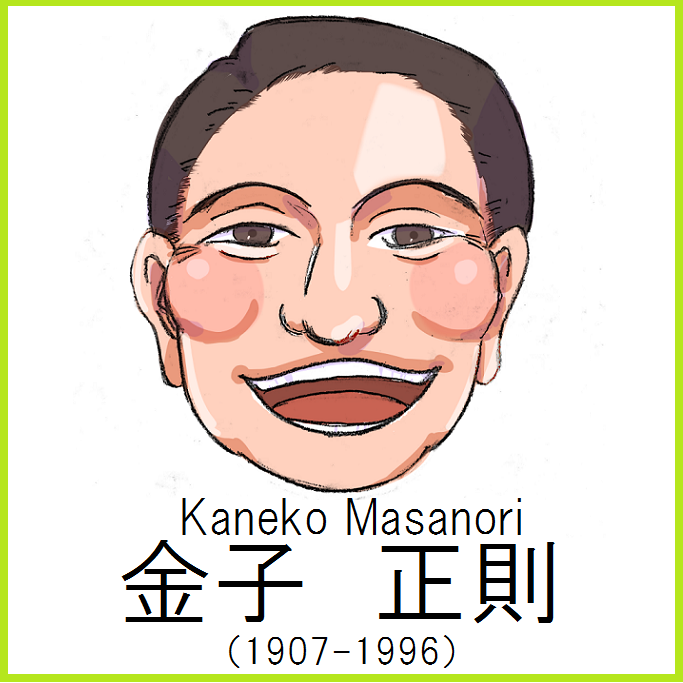
Masanori Kaneko (1907-1996)
Former Kagawa prefectural governor. He contributed to building the Seto Ohashi bridge. Under the motto "Politics is design," he built the foundation for the development of Kagawa after the war and sought to promote culture and art.
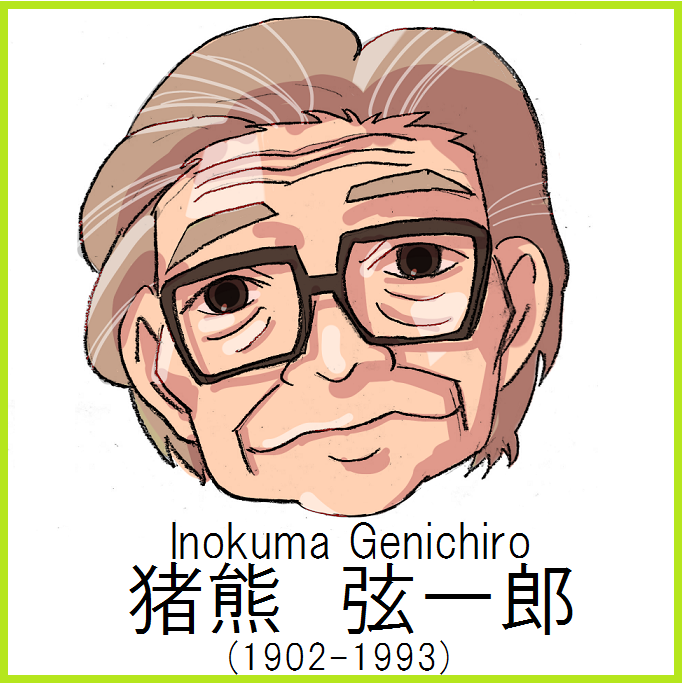
Genichiro Inokuma (1902-1993)
Painter. He produced Wakei Seijaku, a porcelain panel mural at the Kagawa Prefectural Government Office, and many other works.
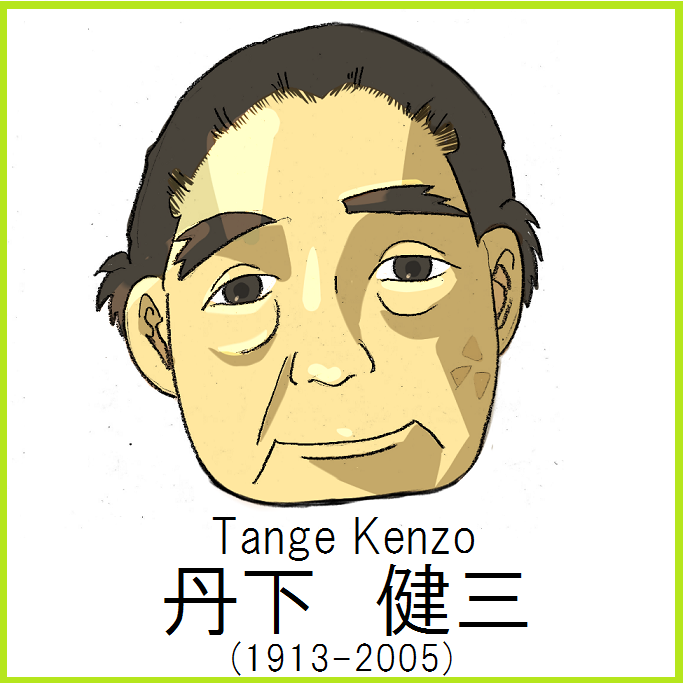
Kenzo Tange (1913-2005)
Architect. He was responsible for major modernism architectural works in Japan and overseas, and he left many works in Kagawa through an exchange with the former governor Mr. Kaneko.
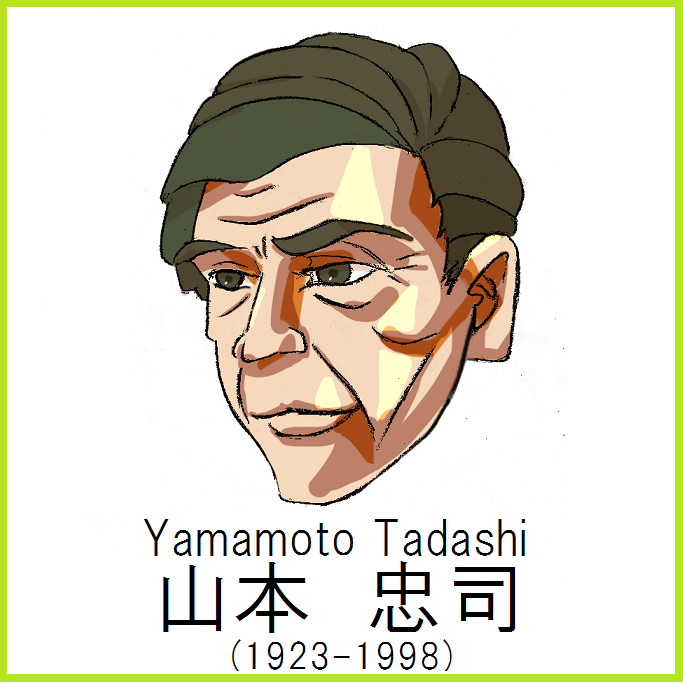
Tadashi Yamamoto (1923-1998)
Architect and the former engineer of the Building and Repairs Section of the Kagawa Prefectural Government Civil Engineering Department. He worked with Mr. Tange and others to construct the Kagawa Prefectural Government Office, and left many public construction works in Setouchi.
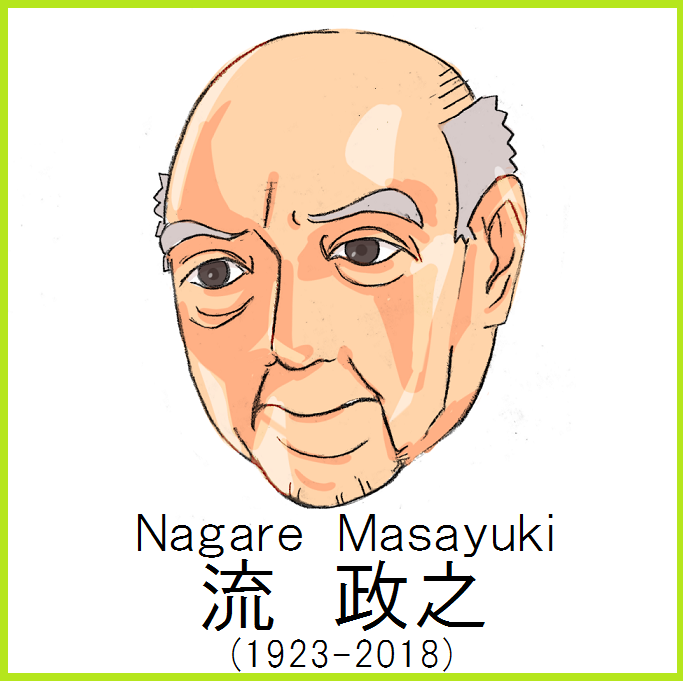
Masayuki Nagare (1923-2018)
Sculptor. He had a studio in eastern Takamatsu City and left many works in Japan and overseas.
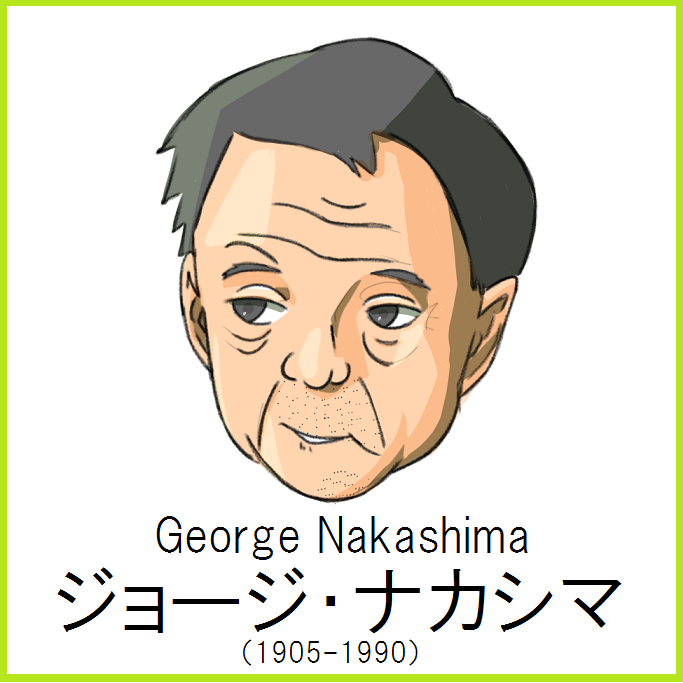
George Nakashima (1905-1990)
Furniture designer. Furniture pieces that maximize the beauty of wood are still produced in the studios in the United States and Sakura Seisakusho (Takamatsu City). Click here for details about Sakura Seisakusho.
Consider the wood and make George Nakashima-branded furniture.
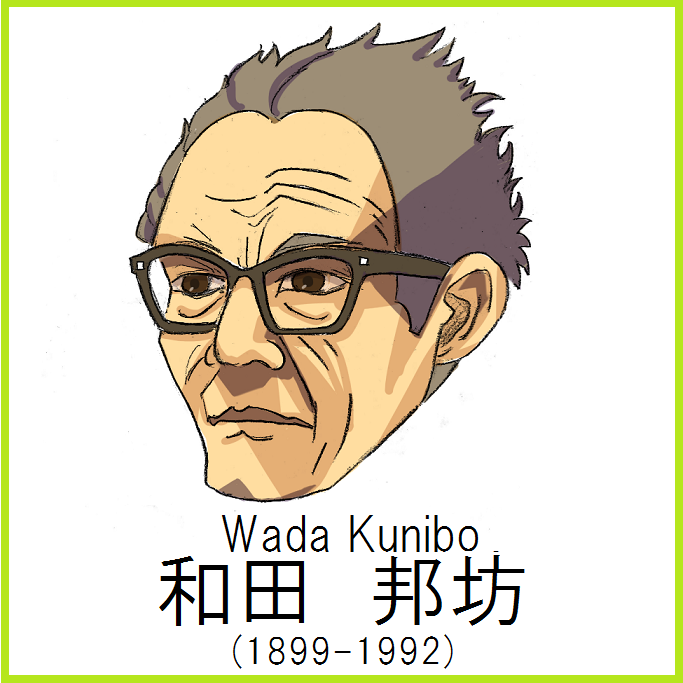
Kunibo Wada (1899-1992)
Painter and designer. He worked on many special package designs for Kagawa Prefecture.
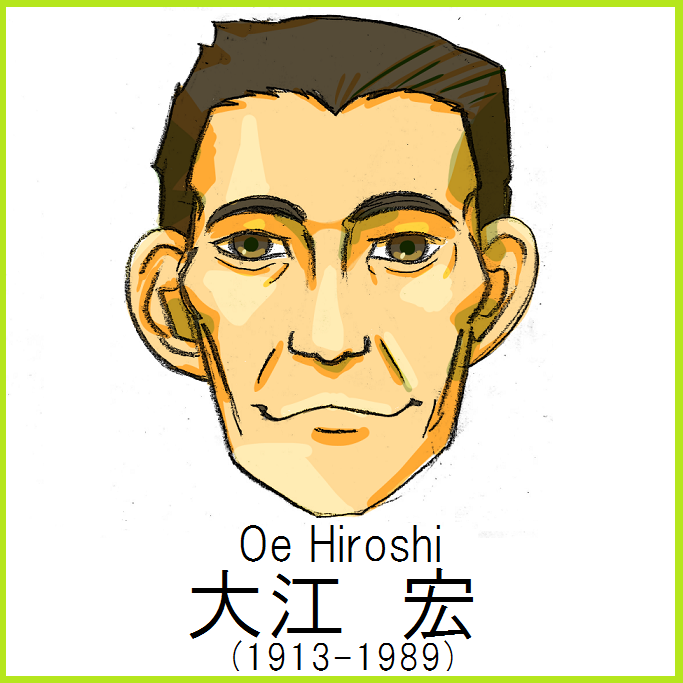
Hiroshi Oe (1913-1989)
Architect. He is well known for architectural designs that harmonize modernism with Japanese traditional styles.
Takamatsu was home to a group called "Sanuki Mingu Ren." It was organized in 1963, led by sculptor Masayuki Nagare as a promotor with the aim of creating daily tools (Mingu) in sophisticated designs, and commercializing and releasing them to the public. The members include some of the above artists. Unfortunately, Sanuki Mingu Ren dissolved naturally over several years. However, the connection with other fields of craftsmanship remains in the designs of Kagawa.
Works created by artists are scattered around the center of Takamatsu City.
While taking their relationships into consideration, tour the town to see architecture and artworks!
Follow the Tracks of Great Figures
Kagawa Prefectural Cultural Hall, a place for presenting cultural and artistic activities
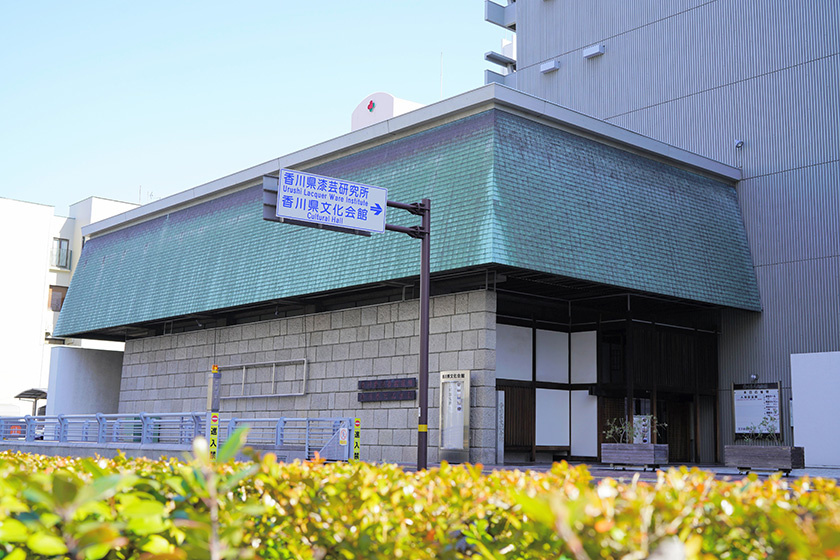
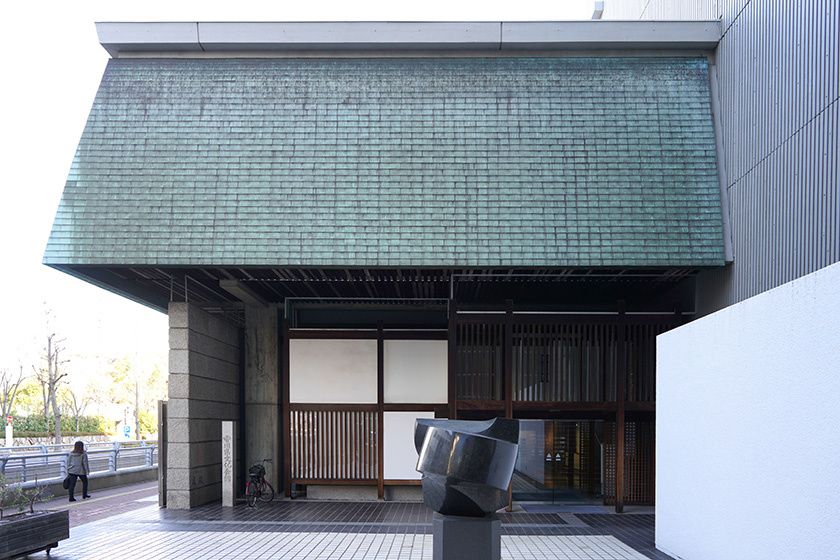
At the entrance, Oidemaase ("Welcome"), works by Masayuki Nagare, a sculptor who has a connection with Takamatsu, welcomes visitors.
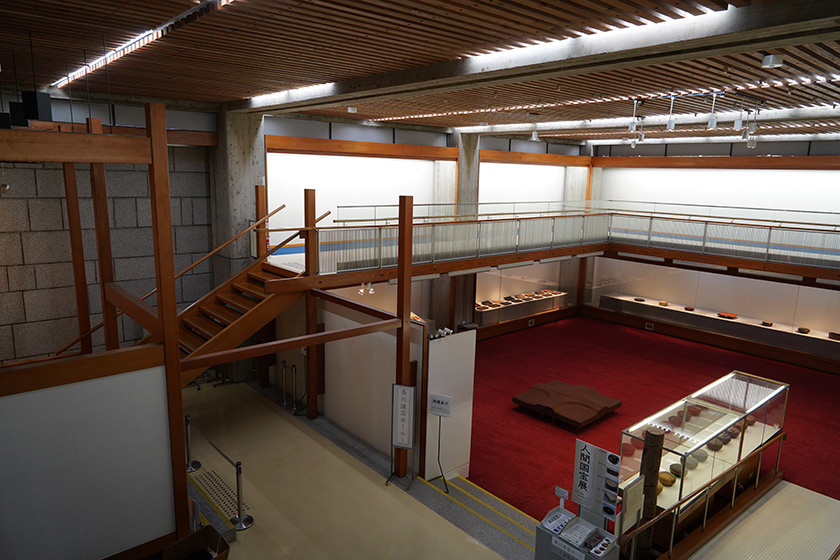
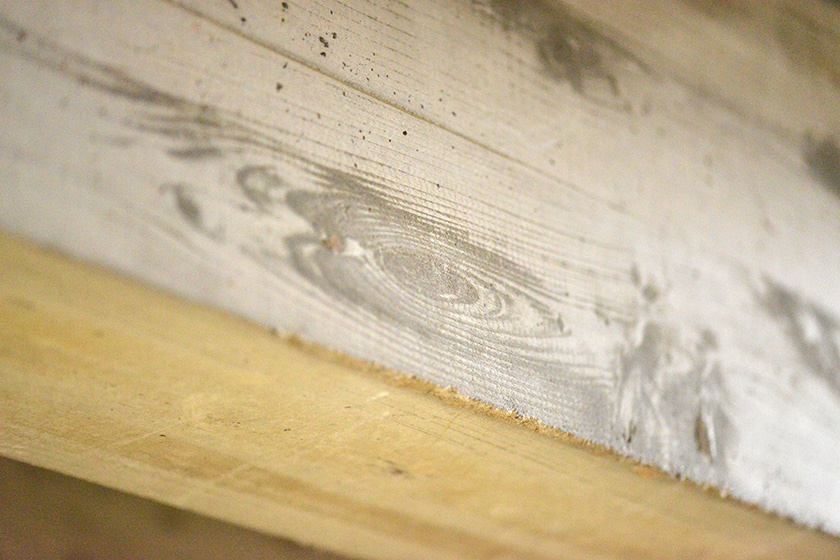
You will see the ceiling immediately after passing through the entrance. Did you notice the patterns on the beams? This is the same technique as in the prefectural government office. The patterns were made by pouring concrete into the wood form and hardening it.
The Cultural Hall is where space is produced in harmony with traditional styles and modern designs with the combined use of concrete and wood. The interior furniture is also a must-see.
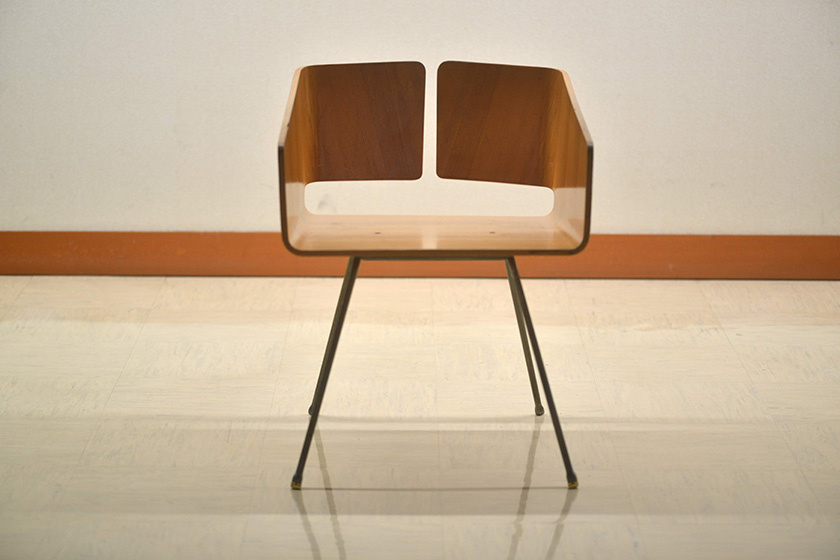
Chairs placed everywhere in the hall were designed by Mr. Hiroshi Oe. Although each chair has the same shape, it reveals a different expression.
Urushi Lacquer Ware Institute, one of two in Japan, was established here, and the prefectural government makes concerted efforts to promote culture and art. On the first floor, you can see Kagawa Lacquerware, which are traditional handiworks, free of charge.
The Hyakujushi Bank Main Branch, a landmark covered with bronze plates
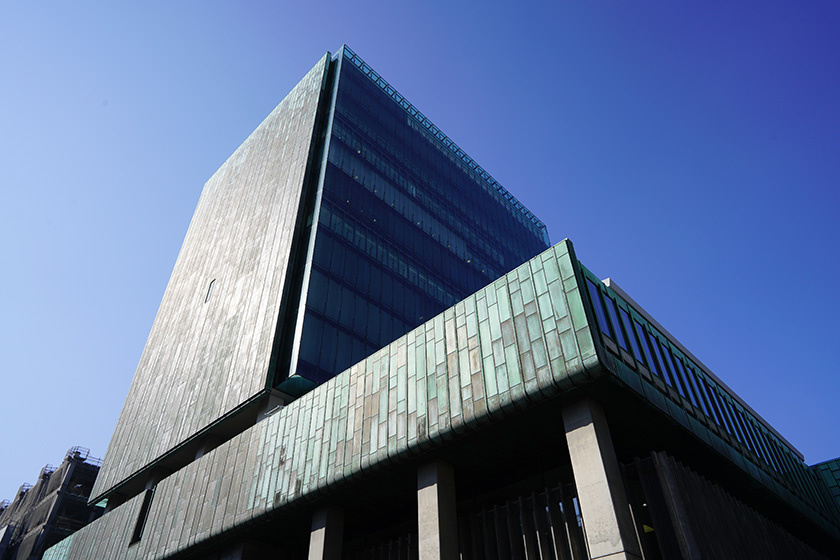
Hyakujushi building with its distinctive verdigris color of copper on the walls. This is also a major example of modernist architecture. At the entrance on the first floor, see the floor and sculpture works designed by Masayuki Nagare.
Five types of granite such as Aji-stone are used for the floor to express waves. Also the sculpture standing on the waves, Tobitatsu Hato ("Pigeon flying away"), entertains pedestrians.
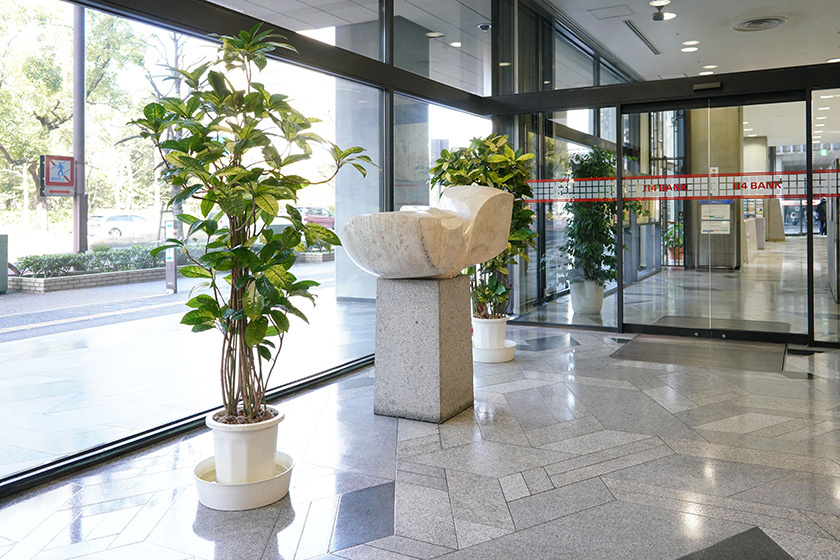
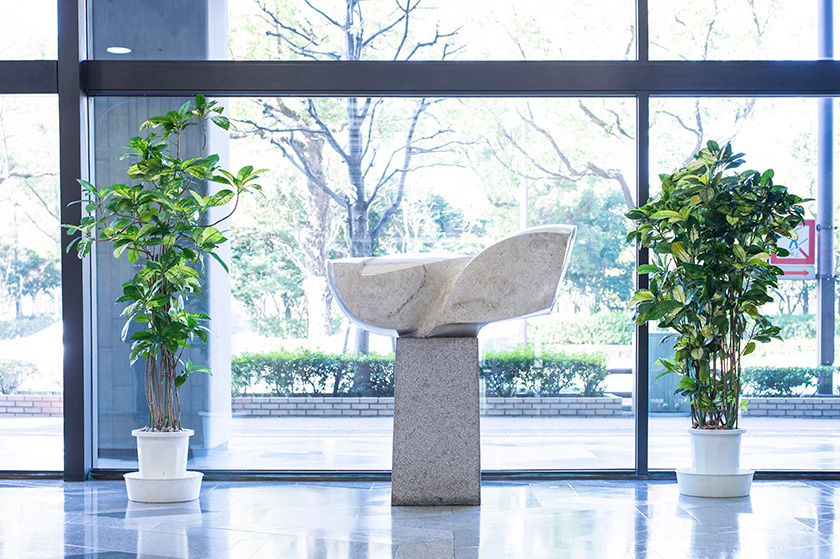
In the parking lot is Sohekiga ("Grass mural"), a huge green mural created by Masayuki Nagare.
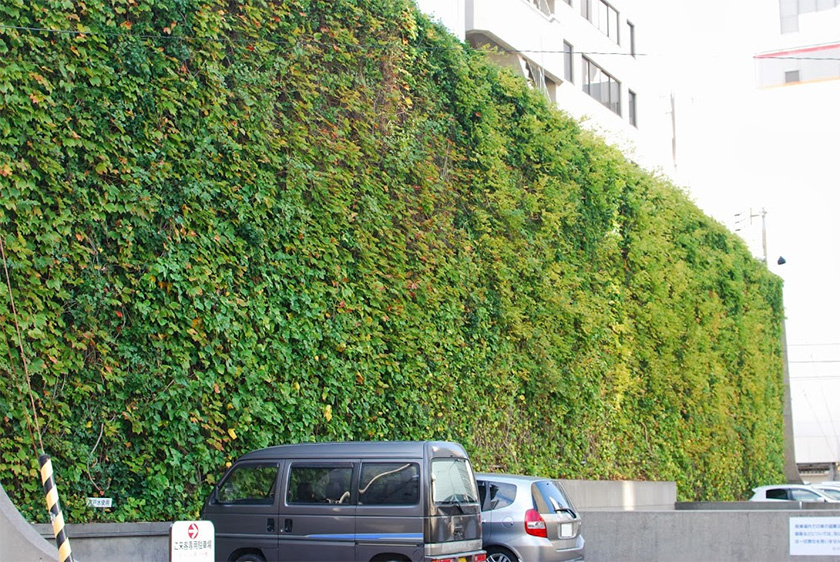
Very rare living works in which the walls are entirely covered with vines.
Tomoedou, a Japanese-style confectionery store which inherits its design from martial arts
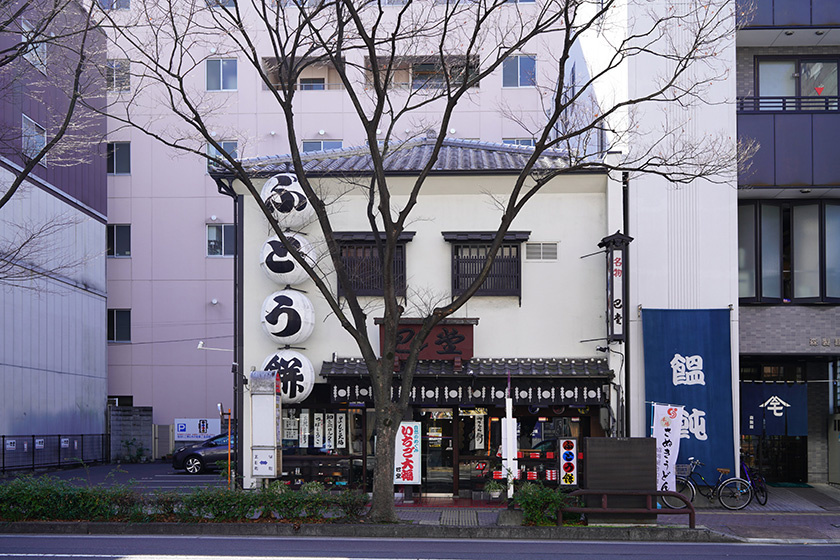
The store manager admired the designs of Kunibo Wada and commissioned him to work on the interior design and product packages. The interior was created in the image of a samurai residence.
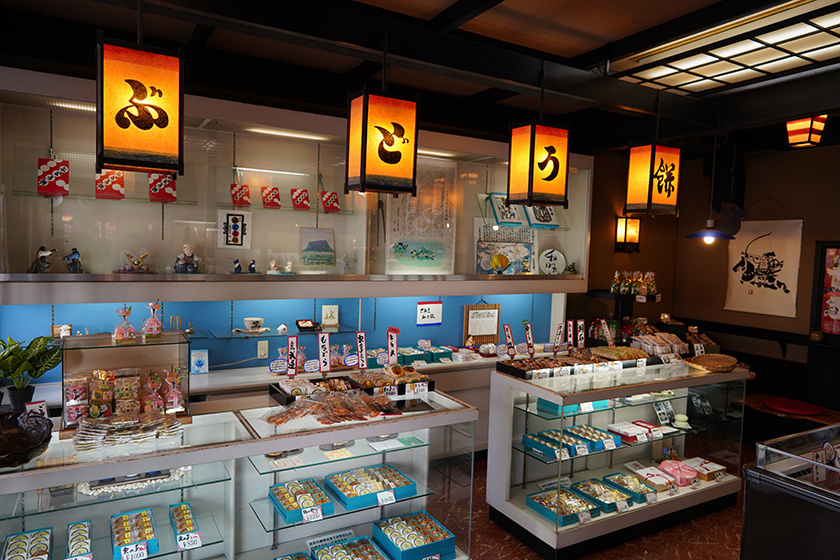
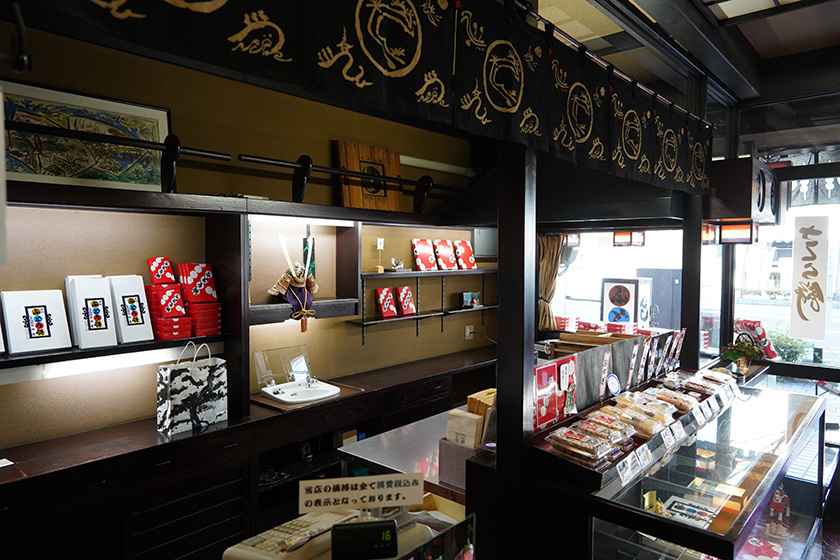
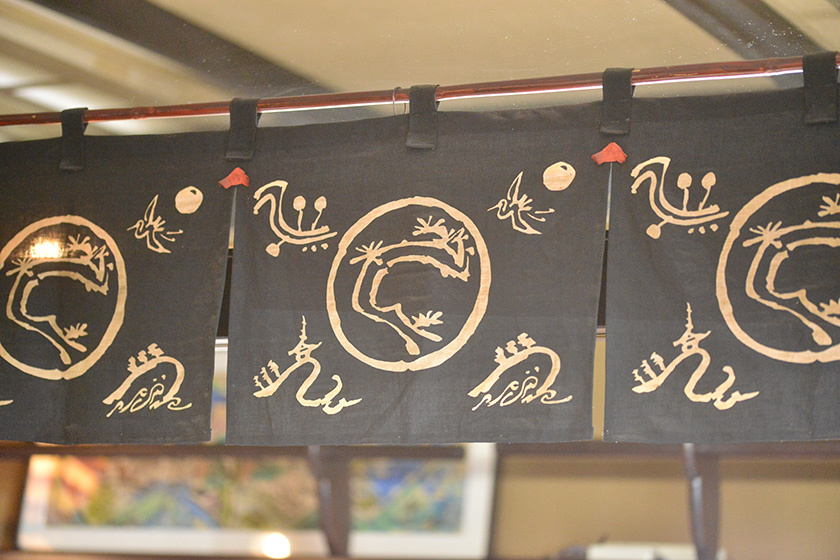
The store display shelves imitate sword racks and the original furniture harmonizes well with the overall atmosphere.
Following Mr. Wada's ideas that just displaying products in the store serves as advertisements and signs, confectionery boxes wrapped with strong red wrapping paper are piled up in the Tomoedou store. Visitors can see the original works still on display today.
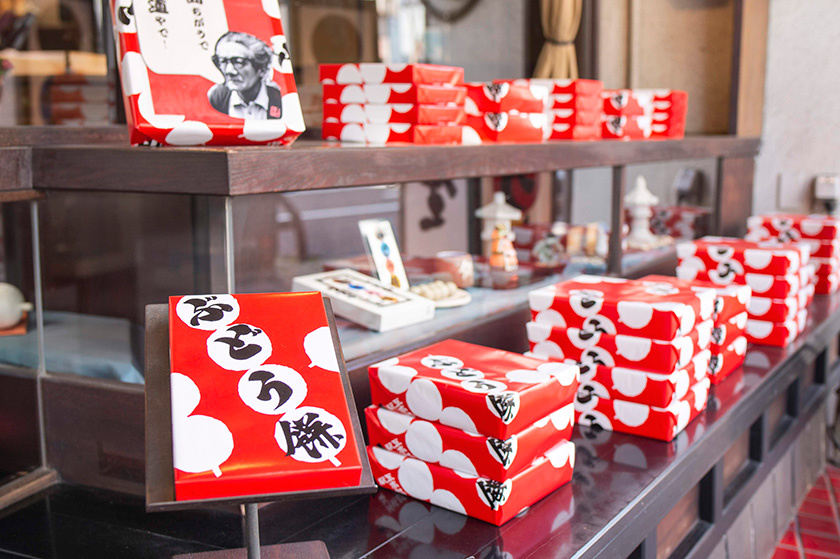
Meibutsu Kamado Takamatsu Store, a local confectionery store
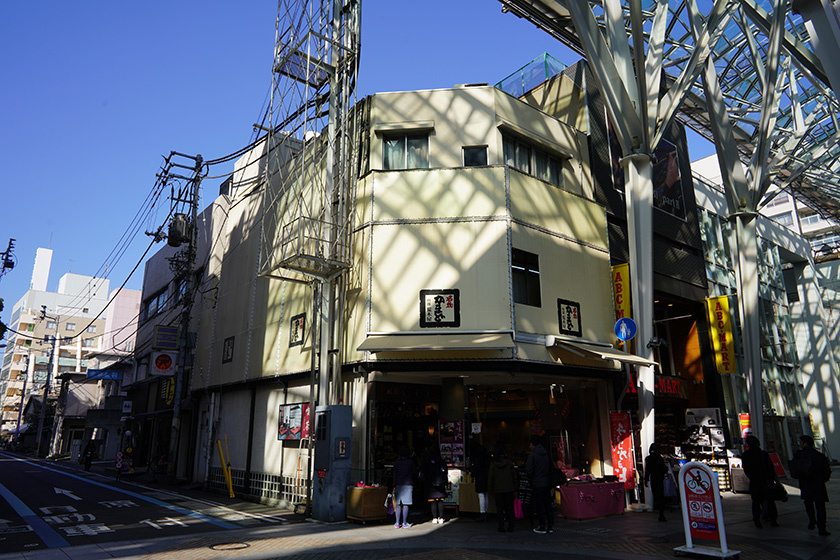
A confectionery store with a long history opened in 1964, and is located in the Marugame-machi shopping arcade. The designs by Mr. Wada are used for product packages.
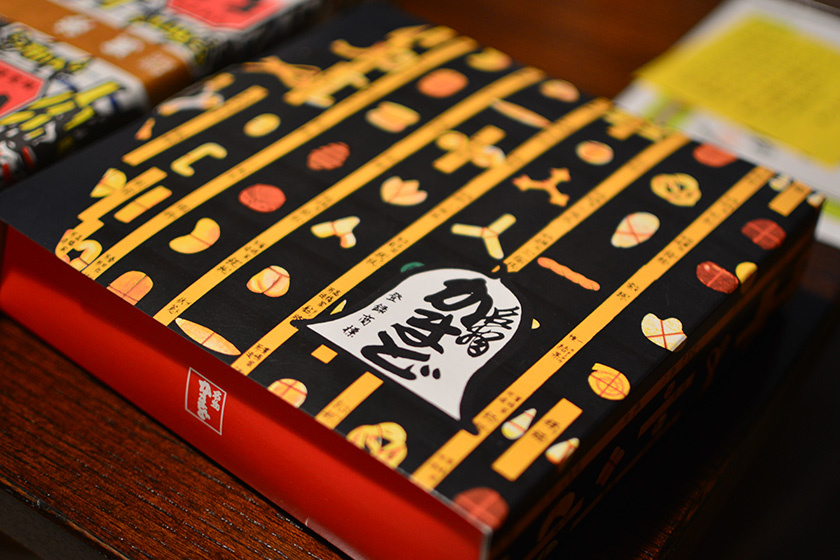
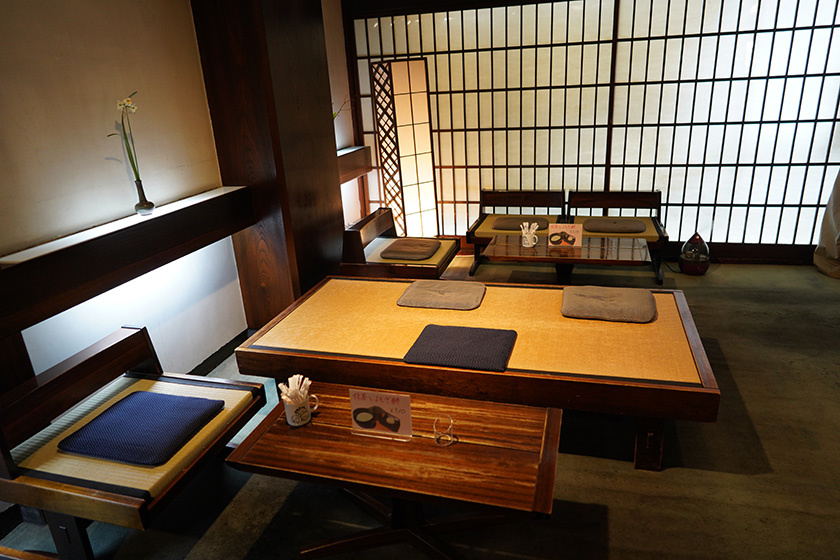
There is a tea room on the second floor. The interior was created by Sakura Seisakusho, and the chairs and lighting produced by Sanuki Mingu Ren are still used today. A set of Sencha and sweets is available, and it comes with a tea pot for you to pour your own tea. While drinking tea slowly, enjoy the paintings and furniture by Mr. Wada, which are changed in monthly rotation at the store.
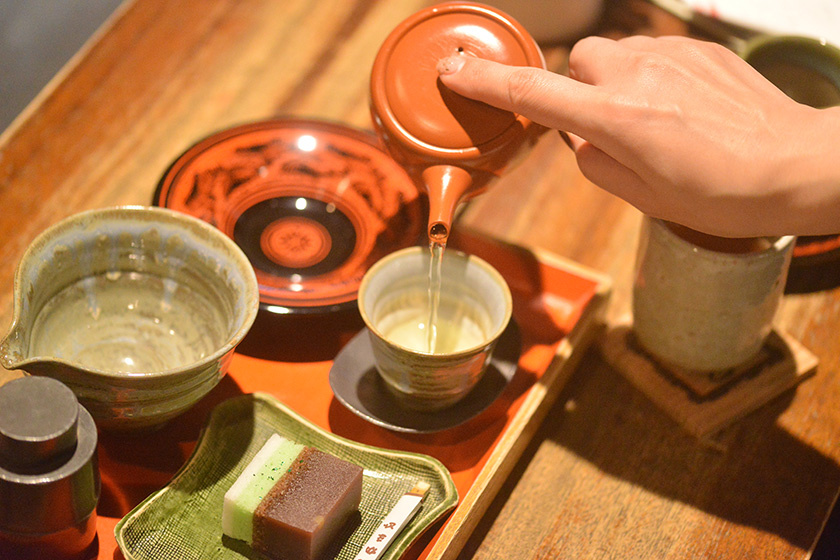
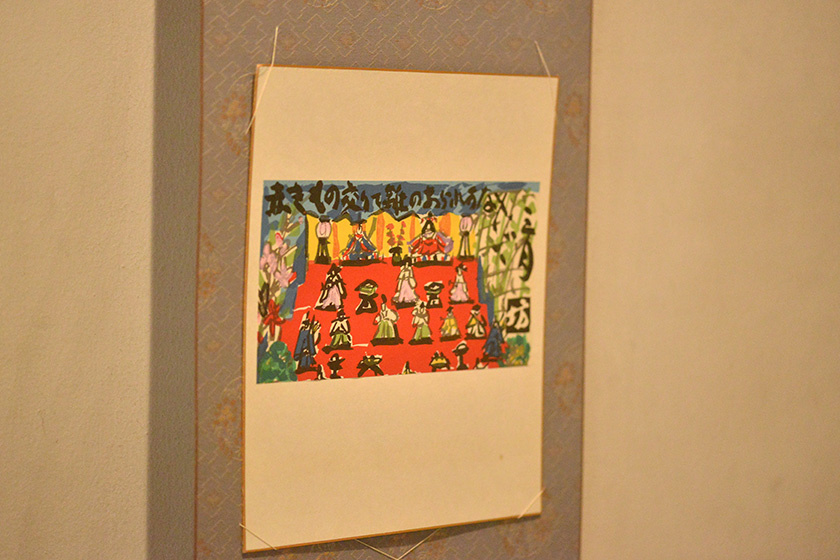
Kutsuwado Main Store, a venerable rice cracker store
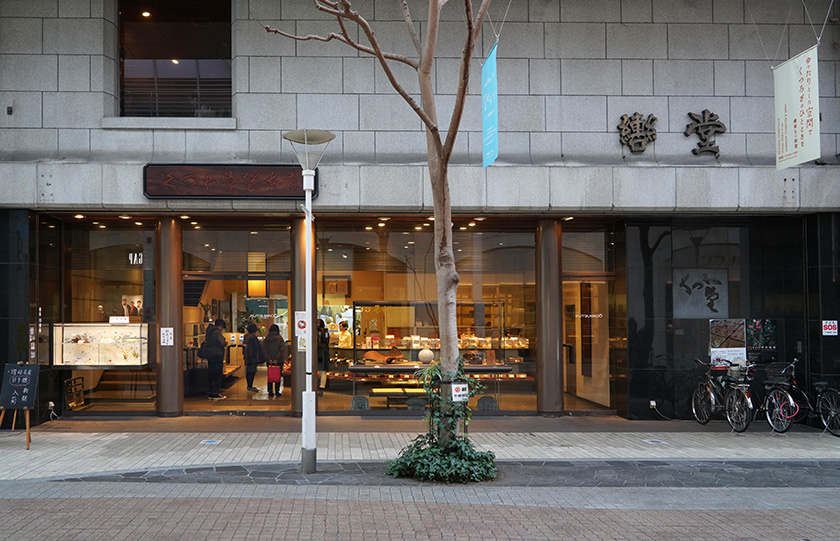
A store located in the Katahara-machi shopping arcade. There is a store on the first floor, and a tea room on the second and third floors. Since its predecessor ran a gallery as a hobby, many works remain the store.
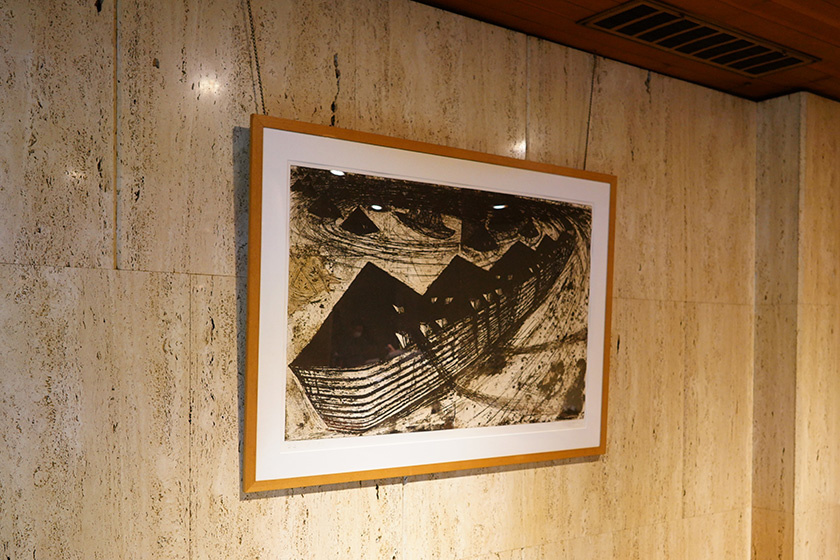
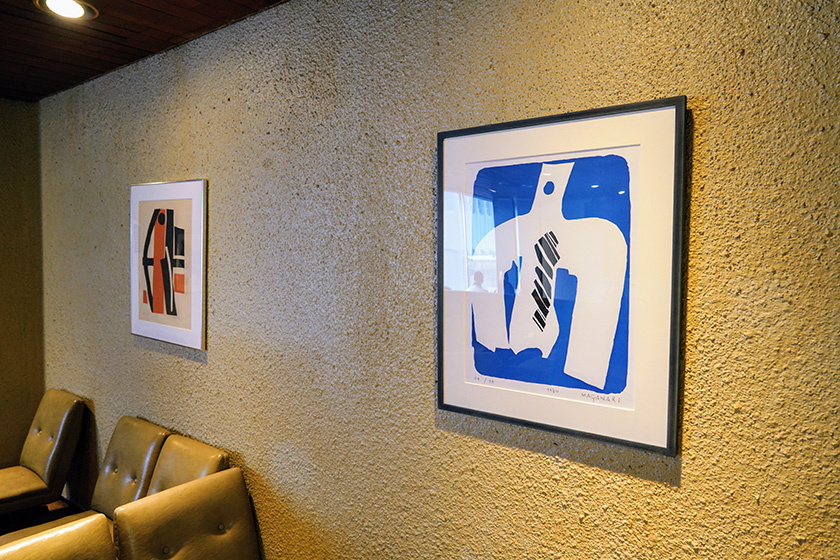
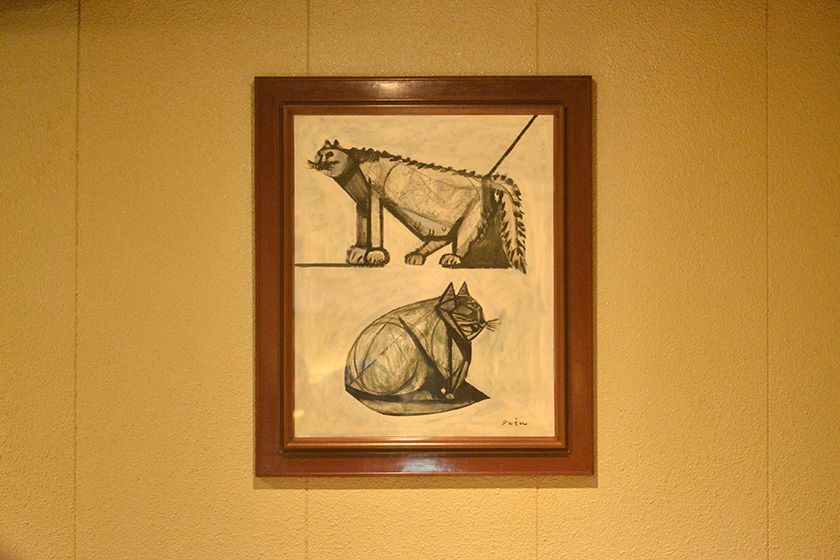
Many artworks are displayed in the store, including paintings by Genichiro Inokuma, whose works are displayed at Marugame Genichiro-Inokuma Museum of Contemporary Art (MIMOCA) located in Marugame, Kagawa, and works by Mr. Lee U-Fan to whom a museum in Naoshima is dedicated. It is a useful store where visitors can fully enjoy viewing art and tea time. Chairs produced by Sakura Seisakusho have been used carefully since the opening of the store and receive routine maintenance. Many customers come to the store for these furniture pieces.
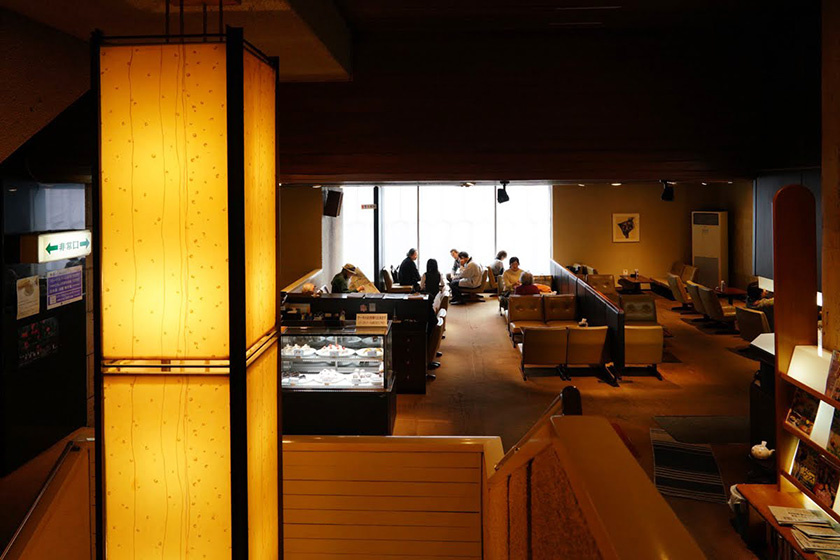
Takamatsu Art Museum, a place where new meets old
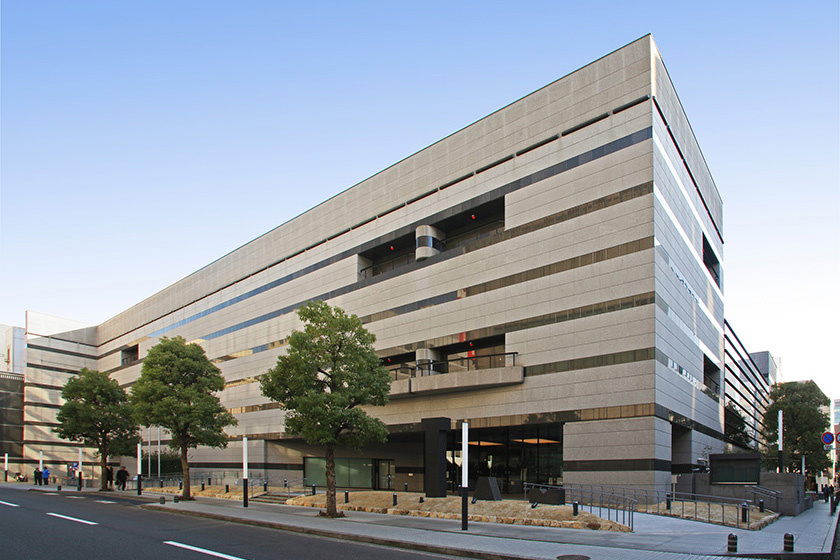
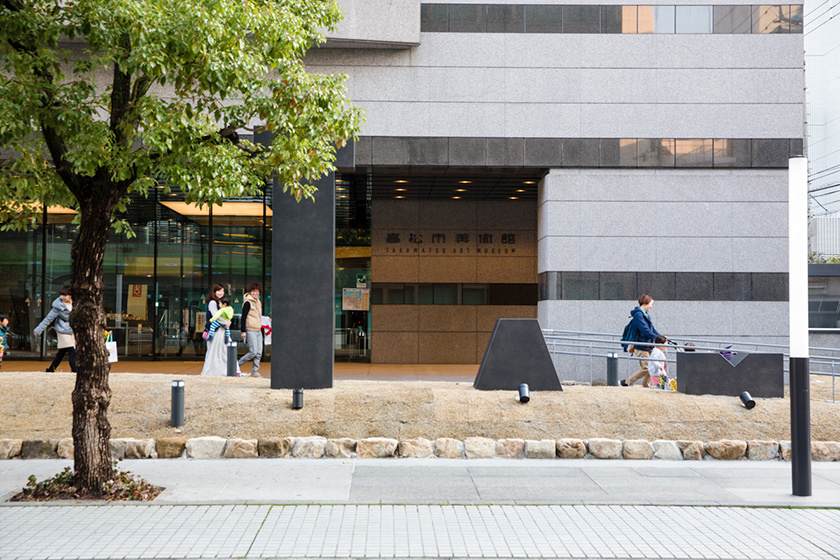
A city museum that was reopened after renovations in 2016. Find many designs of Takamatsu here as well.
The first thing that you will see is Nagarebachi ("Nagare drumstick") by sculptor Masayuki Nagare.
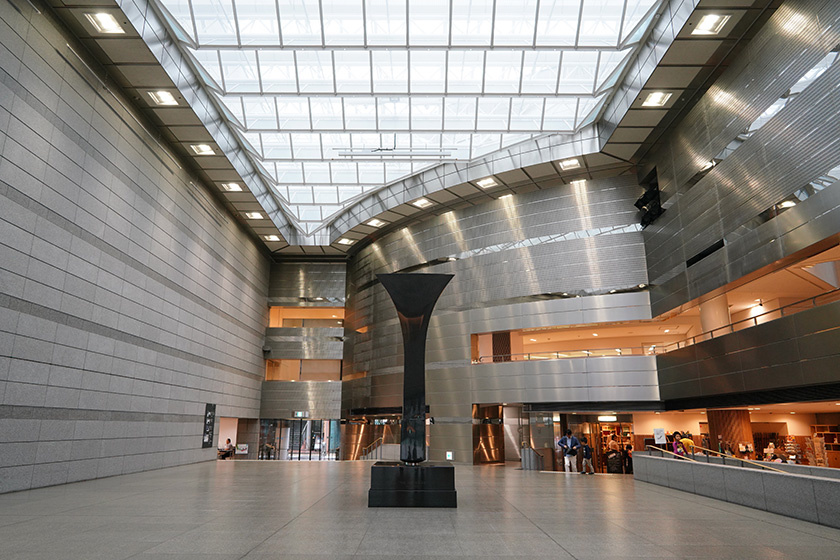
This design in the shape of the drumstick of a shamisen is Mr. Nagare's iconic work, and is part of a series. Among them, the largest piece is in Takamatsu Art Museum. They say that the artwork is connected with the foundation of the museum and it cannot be moved. The artwork has witnessed changes in Takamatsu since 1988, when the museum was established in the present location.
A table with a table top made using a flat board is placed in the rest space. The seats of the chairs placed nearby feature Zokoku lacquering, which is one of the traditional lacquering methods of Kagawa Lacquerware.
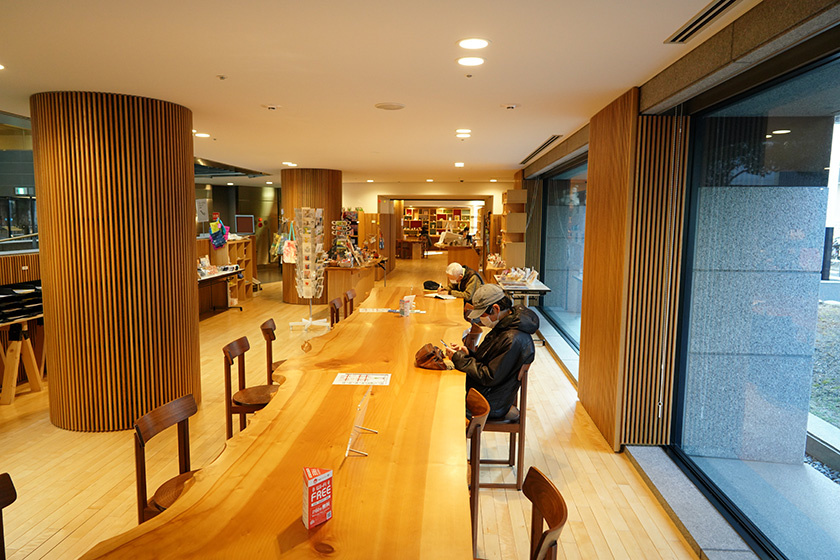
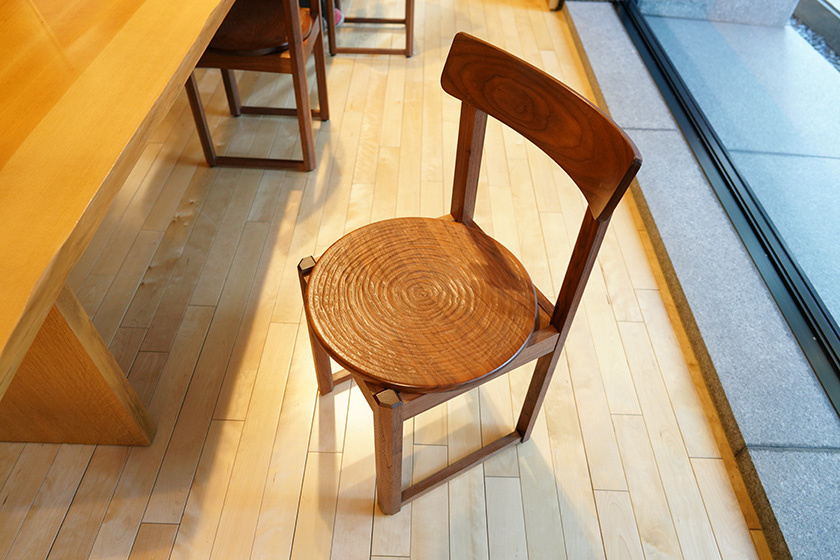
Takamatsu Art Museum is located downtown, and so is highly accessible. Click here for details about the museum information and special exhibitions.
Takamatsu Art Museum
Cafe Shironome, a spiritual place for artists
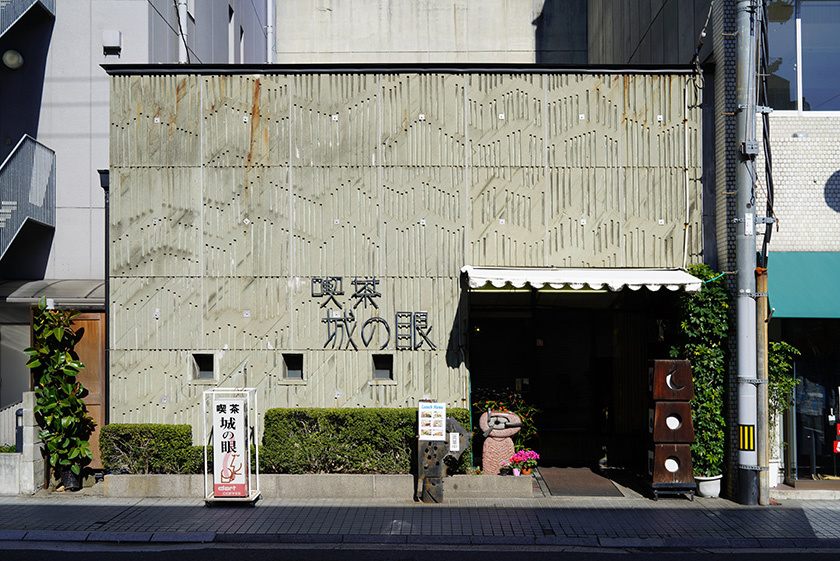
The cafe opened in 1962, and was where many artists gathered at that time. Many enjoyed spending time there.
The building was designed by Tadashi Yamamoto, adopting the designs of many artists, including musicians and sculptors. That is why it is called the origin of his creation. Enjoy a relaxing time in the store, listening to background music from the speakers made of Aji-stone, which was also used for the Tokyo Olympic Games in 1964. If you happen to be passing by, be sure to come inside.
Summary
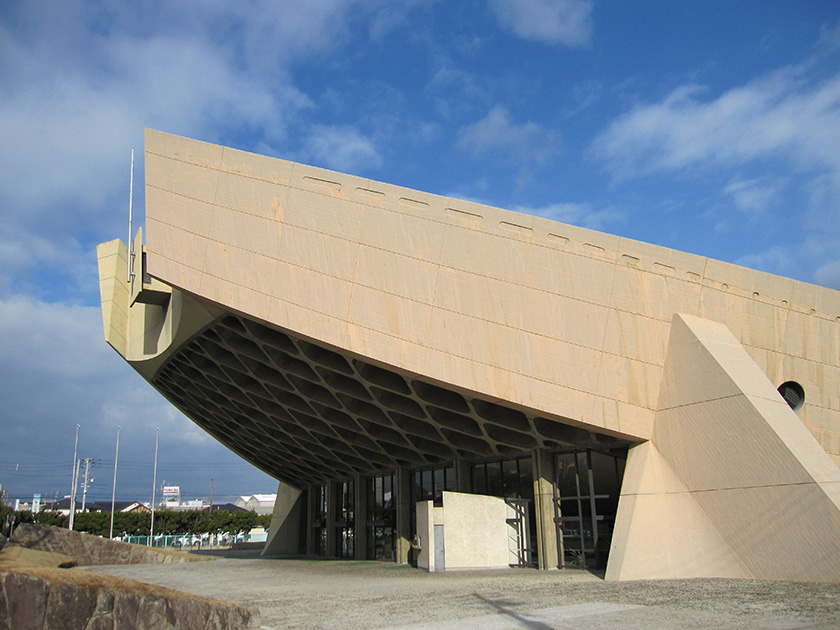
Architectural works by Kenzo Tange are also located away from downtown.
The former Kagawa Prefectural Gymnasium, where many sports were played. The protruding portions that look like bows are the auditorium of the arena. This original shape of the designs was created to reduce the costs of the foundation work on the fragile ground that was previously a salt pan.
Although it was closed in September 2014, it still attracts many visitors from all over the world.
Thus, Takamatsu City boasts a wide range of architectural masterpieces and designs that attract attention from overseas.
In downtown Takamatsu City, where major Japanese modernist architecture and art pieces converge, you might discover other hidden traces of great figures. Start by taking the art tour and enjoy!
Gathering date:2019.4.18











